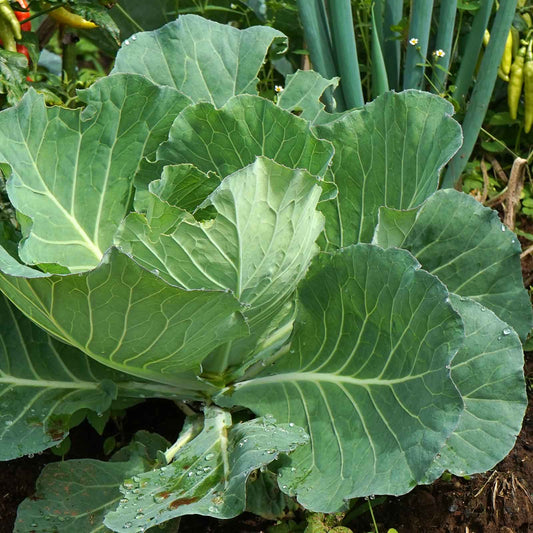-
main-collection-product-grid

Collard Seeds - Georgia Southern
Slow to bolt variety with huge and juicy leavesCollard Seeds - Georgia Southern
Slow to bolt variety with huge and juicy leavesRegular price As Low As $4.99Regular priceUnit price per -
main-collection-product-grid

Collard Seeds - Vates
Dark blue-green nutritious leavesCollard Seeds - Vates
Dark blue-green nutritious leavesRegular price As Low As $4.99Regular priceUnit price per -
main-collection-product-grid

Collard Seeds - Champion
Disease and frost resistant, a trusted varietyCollard Seeds - Champion
Disease and frost resistant, a trusted varietyRegular price As Low As $4.99Regular priceUnit price per -
main-collection-product-grid

Collard Seeds - Morris Heading
Extra tender, mild tasting leavesCollard Seeds - Morris Heading
Extra tender, mild tasting leavesRegular price As Low As $4.99Regular priceUnit price per
About our collard seeds
- 4 collard seed varieties
- Fabulous fall crop that withstands winter conditions
- Tolerates some shade, but prefers full sun exposure
- Tasty and nutritious
Healthy and flavorful collard greens
Widely considered to be a healthy food, collards are a low-calorie option and a good source of vitamin C, fiber, and vitamin K. Popular cultivars of collard seeds offered include Eden Brothers' Georgia Southern Collard Seeds and Morris Heading Collard Seeds. These plants are headless-forming cabbages, similar to kale, and make an excellent kitchen staple for the colder months.
Collards are a cool season vegetable, and are often planted in late summer to early autumn for winter harvest in the south. Very cold hardy (harvest can continue right through snow), you will find that frost actually improves the flavor of collard greens! In more northern areas, collards may be planted mid-to-late summer for an abundant supply of this dark green leafy vegetable for fall or winter harvest.
How to plant collard seeds for a successful harvest
Collard seeds may be started indoors or in a separate area outside before transplanting to your garden. Collards prefer moist, fertile soil and full sun conditions with temperatures between 65 and 75°F. Sow seeds 1/4 to 1/2 inch deep. Germination will occur within five to ten days. Prepare your outdoor garden with three to four inches of compost.
When daytime temperatures are averaging around 50°F and when plants reach approximately four to six inches tall with two to four leaves, transplant the seedlings to your outdoor garden. Set your transplants a little deeper in the soil than when the seeds were sown, spacing plants 18 to 20 inches apart and rows 24 to 42 inches apart. Collards require 1 to 1 1/2 inches of water every week. When your leaves are about 10 inches long and dark green in color, you can begin harvesting. Pick the lower leaves first, working your way up the collard plant.
What to plant with collard seeds to keep your crop healthy and beautiful
Companion plants for collards include, but are not limited to, mugwort, thyme, rosemary, oregano, catnip, chamomile, garlic, and onions!
For more information about planting, growing, and caring for collard seed, see the Collard Seeds Planting Guide.



